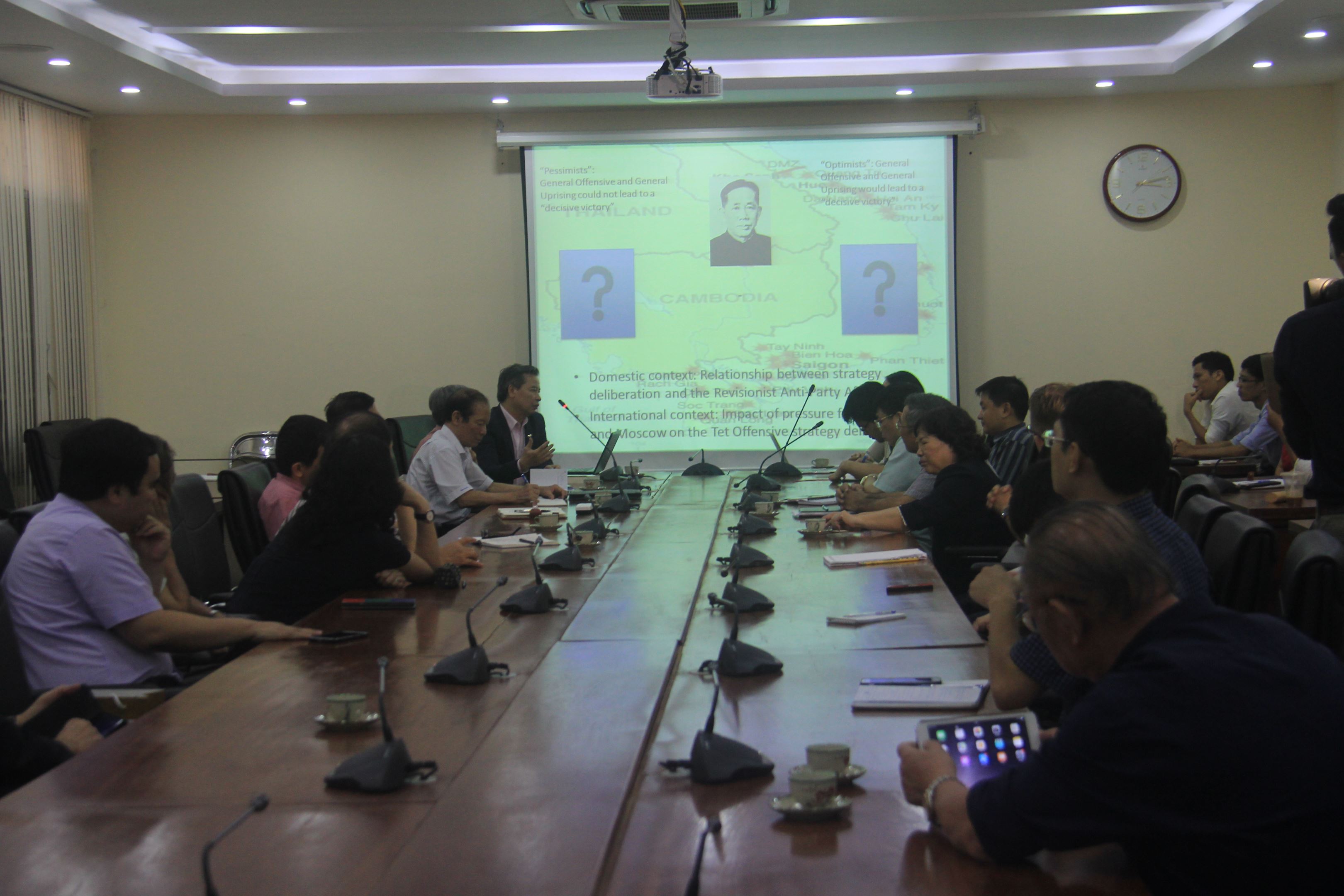Professor Nguyen Thi Lien Hang surveyed the policy-making process related to the 1968 Tet Offensive in the United States and Vietnam. According to her, at that time, in the United States, there were two opposing views on President Lyndon B. Johnson's military strategy. The "pessimistic" faction, including Secretary of Defense Robert McNamara and Senator William Fullbright, believed that his policy could not help the United States win in Vietnam. The "optimistic" faction, including Chief of Staff Earl G. Wheeler and Senator John Cornelius Stennis, wanted to escalate the war and increase the US military presence. They thought Johnson was too reserved and conservative. In response, President Johnson chose a middle path to please both factions. Therefore, at the end of 1967, he summoned General William Westmoreland back to the country to help arouse public support for his policy. In early January 1968, President Johnson ordered all US generals in Vietnam to defend Khe Sanh, which he considered a close target for the North Vietnamese army to attack. He also believed that the US and Saigon armies could hold out at Khe Sanh, thereby completely suppressing the enemy's fighting power.

Through research on various sources, Professor Nguyen Thi Lien Hang also analyzed the policy-making process in Vietnam at that time. According to her, within Vietnamese politics, there was also a difference between two groups of optimists and pessimists regarding the strategy and the possibility of ending the war in the South. However, the final decision was still in the hands of General Secretary Le Duan. The decision to launch a general offensive began in late 1963 at the 9th Congress of the Communist Party of Vietnam, when the government of the Democratic Republic of Vietnam decided to use force to attack the South. In early 1965, General Nguyen Chi Thanh declared that it was impossible to rely on guerrilla warfare to defeat the army of the Saigon government. He was supported by General Secretary Le Duan and General Vo Nguyen Giap. In May 1967, the Politburo convened a meeting to approve a strategic offensive resolution, with goals such as “within one year, destroy 3 to 5 American brigades... As for the puppet army, try to destroy a number of battle groups or regiments, and defeat 3 to 5 divisions.”
However, according to Professor Nguyen Thi Lien Hang, this plan still encountered some problems within the government of the Democratic Republic of Vietnam, especially after July 1967 when General Nguyen Chi Thanh passed away. In an interview with the People's Army newspaper in 2004, his successor, General Van Tien Dung, said that the general offensive plan proposed by the Politburo should have had new goals, objectives, and methods of attack. In the Politburo meeting at the end of July 1967, President Ho Chi Minh further noted that the offensive plan needed to consider the ability to fight long-term, ensure logistics, people's strength, and the ability to prolong guerrilla warfare. In October 1967, in the Politburo meeting on the Winter-Spring-Summer 1967-1968 strategic plan, President Ho Chi Minh, General Secretary Le Duan, and General Vo Nguyen Giap were all absent. However, the Politburo still implemented the plan by setting the start date for the General Offensive and Uprising on the occasion of the Mau Than Tet. In December 1967, the Politburo issued a resolution to move the revolution in the South into a new period, a period of decisive victory.

According to Professor Nguyen Thi Lien Hang, we can see certain similarities between the strategic decision-making process of Vietnam and the United States with the Tet Offensive. Both sides had different opinions about the attack strategy and the possibility of victory. In the United States, after facing political pressure, President Lyndon Johnson summoned General Westmoreland back to the country to discuss US military policy; in Vietnam, General Nguyen Chi Thanh was summoned from the South to the North to discuss the plan for the general offensive and uprising. Basically, both sides believed in the possibility of a lightning and comprehensive victory. However, she also acknowledged the relative nature of the comparisons she made; she hoped that more research would be done to clarify the details surrounding this remarkable historical event.
After the presentation, Professor Nguyen Thi Lien Hang received comments and questions from the audience on issues such as the impact of the international political context, especially from the Soviet Union and China, on the decision to carry out the General Offensive; the connection between the victory of the Tet Offensive and the victory of the entire war on the Vietnamese side; the unity of the Vietnamese leadership in the process of planning the general offensive and uprising; the influence of individual Vietnamese leaders in the process of making military decisions during this period.


Prof. Dr. Pham Quang Minh and representatives of General Nguyen Chi Thanh's family took a souvenir photo with Prof. Nguyen Thi Lien Hang
Author:Tran Minh
Newer news
Older news